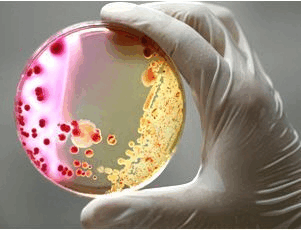THE EFFECT OF DENTAL IMPLANTS ON INCREASING THE COLONIZATION RATE OF AEROBIC BACTERIA IN THE ORAL CAVITY
Keywords:
Dental implants, lingual buccal tongue CFU, normal teeth, oral bacterial colonization, YemenAbstract
Background and aims: Dental implants' principal function is to support artificial teeth. The physiological process by which bones firmly adhere to the surface of various ceramics and metals, such as titanium, is what leads to the emergence of modern dental implants, and there may be negative effects of these implants on the balance in the bacterial numbers in the mouth. Therefore, this study compared the colony forming unit (CFU) of oral bacteria from the buccal mucosa and buccal tongue between patients who had dental implants and healthy volunteers without dental implants.
Methods: In this study, 36 people with dental implants and 36 people without dental implants were both included. Following serial dilutions were made and distributed on blood agar, samples were grown in Brain Heart Infusion Broth (BHI). When a single layer of bacteria developed on blood agar at any dilution level, CFU was estimated. Version 7 of Epi-info Statistics software was used to analyze the data. In each graph, the results were presented as mean standard error of the mean (SEM), and in the table, as mean and standard deviation (SD). Collected data were normally distributed and an independent T-test was used to compare different means of oral CFU bacteria between control and test groups of buccal mucosa and lingual mucosa.
Results: For non-implant controls the values for buccal mucosa of bacterial counts were slightly lower than that of the implant patient’s buccal mucosa. There was a significant correlation between the increase of aerobic bacterial colonization of the tongue with the implants where the mean±SD was 196.8±12.9 CFU/ml greater than 183.4±9.1 CFU/ml for the normal controls; indicating the enhancement of the effect of the implant in the heavy colonization of bacteria in the oral cavity among implant patient group (p<0.0001). There was a significant association between ≥5 implants and heavy bacterial colonization of the oral cavity with the mean±SD being 214±13.9 CFU/mL vs. 192.85±4.44 CFU/mL for the two-implant composite patient; p=0.027. Additionally, there was a strong correlation between the duration of 13–24 months since implant placement and decreased bacterial colonization of the oral cavity with the mean±SD being 193.2±10.3 CFU/mL vs. 209.6±13.8 CFU/mL for ≤ 12 months; p=0.005.
Conclusion: Patients with implants had greater lingual buccal tongue CFU readings than non-implant patients, suggesting that implants are more prone to plaque adhesion. Dental implants, particularly those associated with five implants or more and those recently placed, increased the amount of bacteria leading to heavily colonized of the oral cavity.

Peer Review History:
Received: 6 April 2023; Revised: 9 May; Accepted: 27 June 2023; Available online: 15 July 2023
Academic Editor: Dr. Iman Muhammad Higazy , National Research Center, Egypt, imane.higazy@hotmail.com
, National Research Center, Egypt, imane.higazy@hotmail.com
Reviewers:
 Omnia Momtaz Al-Fakharany, Tanta, University, Eygpt, amina.elfakharany@pharm.tanta.edu.eg
Omnia Momtaz Al-Fakharany, Tanta, University, Eygpt, amina.elfakharany@pharm.tanta.edu.eg
 Dr. Mohaddese Mahboubi, Alzahra University, Tehran, Iran, mahboubi@barijessence.com
Dr. Mohaddese Mahboubi, Alzahra University, Tehran, Iran, mahboubi@barijessence.com
Downloads

Published
How to Cite
Issue
Section

This work is licensed under a Creative Commons Attribution-NonCommercial 4.0 International License.









 .
.